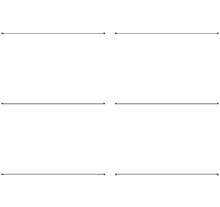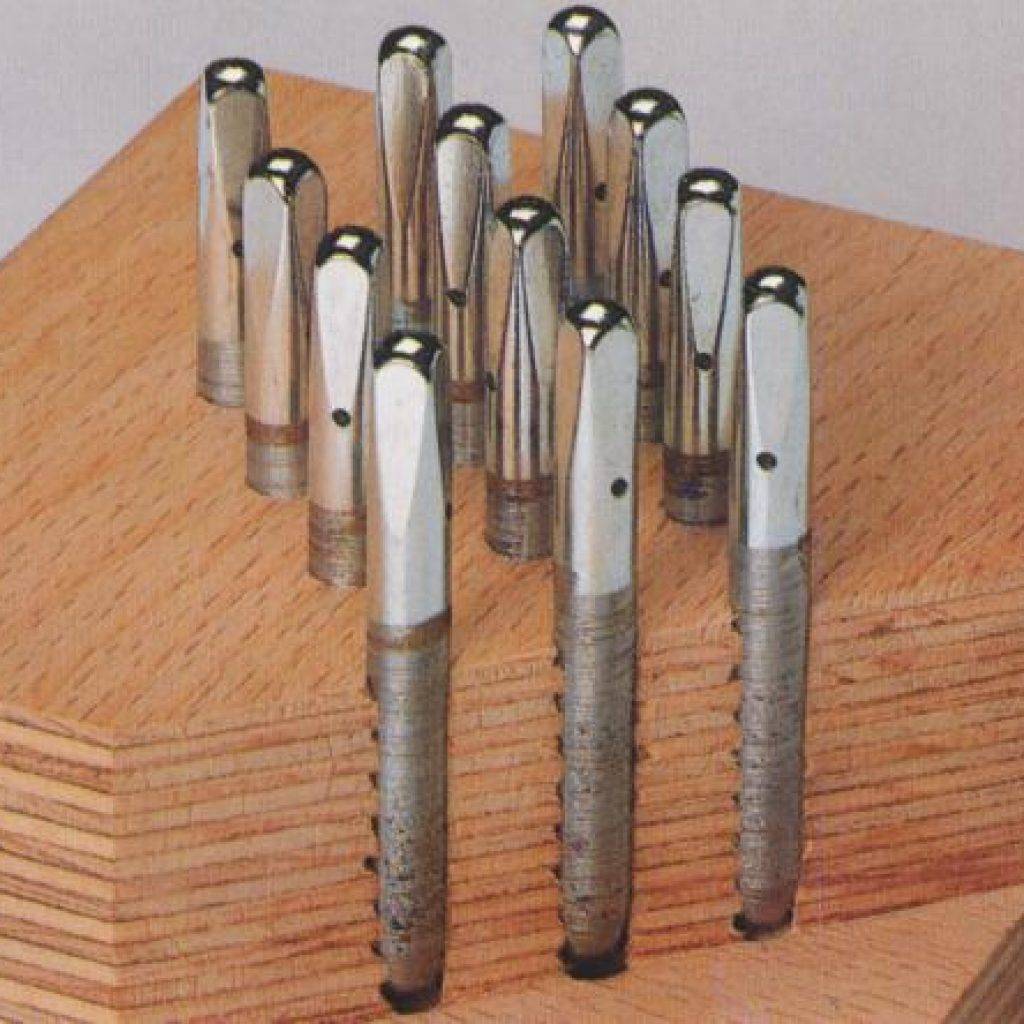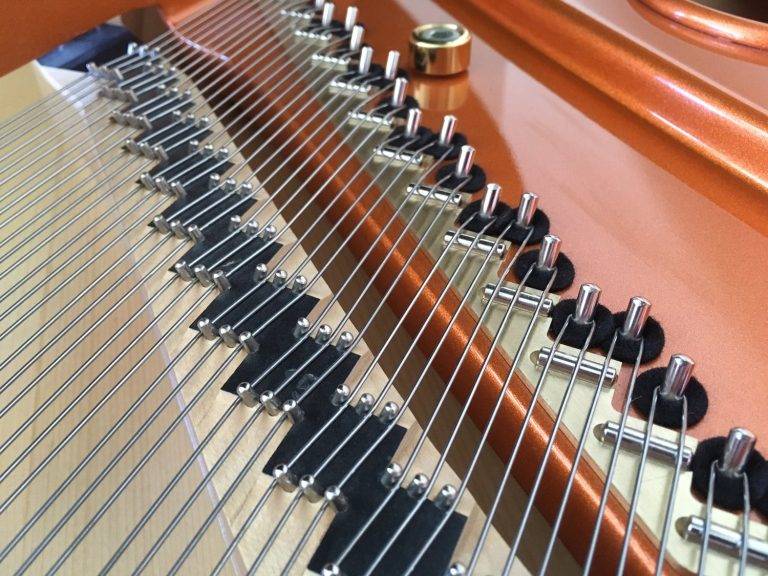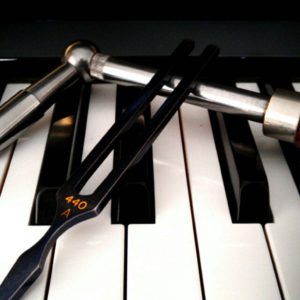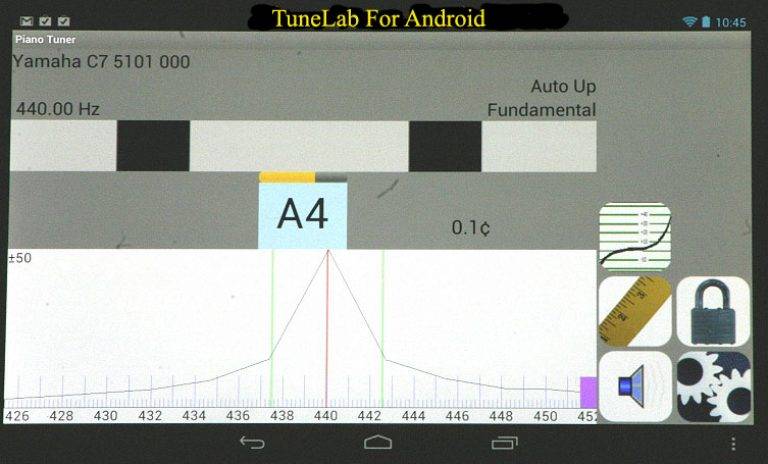[vc_row][vc_column][vc_column_text]
Piano tuning and review it
Piano tuning or piano tuning means bringing the tension of the strings to the desired frequency, the maximum standard tension of the piano strings is set at 440 Hz
[/vc_column_text][/vc_column][/vc_row][vc_row][vc_column width=”1/4″][vc_column_text]
[/vc_column_text][vc_column_text][/vc_column_text][/vc_column][vc_column width=”3/4″][vc_column_text]
The sound that can be heard from a tuned piano is so beautiful and soulful and it is so powerful that it is able to separate you from this world and make your soul fly during the whole time the music is played. This is the power that piano tuning gives to this instrument, and it is amazingly powerful and skillful that it has been able to do its job. Most people who professionally create beautiful songs with the piano emphasize that before you sit on the chair and in front of the piano, you must tune the piano, otherwise you can not listen to your ears. Make the guest a memorable and unique song and music and make the audience and listeners not have the verbal astonishment to say and the ability to speak. In the piano, hammers strike the strings, giving a beautiful melody of the instrument. Usually each wire has a frequency that should reach the standard frequency. Tuning is actually an operation that helps the wires reach the standard frequency. What is a piano tune and how is it done?
[/vc_column_text][/vc_column][/vc_row][vc_row][vc_column][vc_column_text]
What is a piano tune and how is it done?
Piano tuning is the set of operations performed to bring the frequency of strings to the standard frequency.
Piano is a mechanical device consisting of 6,000 to 7,000 pieces, all of which must work in unison. Finally, the hammers hit the wires and sound is produced from the wires.
Each piano consists of approximately 220 strings composed of different parts, including: length, thickness and material of the strings. The wires are in 3 parts.
Base or bottom wires
Middle or middle wires
High note’s
In each of these parts to produce a low or bass sound, there are these differences. Each of these wires needs to be stretched.
Pull the wires
A standard for stretching the strings of a piano is defined as the Frequency.
Pattern of detection of this frequency to stretch the wires:
Previously, 432 Hz was set for the یاLA or A4 sheet of the fourth octave. This means that each time the hammer strikes the strings on the A4 sheet:
The wire vibrates 432 times per second.
Of course, in the world of modern music, this frequency has increased to 440 Hz per second. This set of operations to bring the wires to the standard frequency is called piano tuning.
How long does a piano tuning take and how often should it be tuned?
Each piano note consists of 1 to 3 strings. Each of these wires is connected to a cylindrical piece of metal called a tuning pin.
The tuning pins themselves are embedded in a cast iron plate or pin block. To produce the desired and standard sound by each note on the piano, all these strings must be stretched uniformly at a predetermined frequency. This is done with a special piano tuning wrench.
By the technician, the duration of the piano tune to various items such as:
– Omar Piano
– Quality of tuning pins
– Previous cookie history
– The skill of the technician or technical expert of the piano depends.
Experimentally, this takes between 80 and 120 minutes. If the tuning is done accurately and correctly, all the wires must vibrate in harmony with each other, uniformly and homogeneously, so that a clear and quality sound is produced.
The durability and stability of the piano tuning to various factors, including:
The weather, the humidity, the intensity of the playing and the amount of playing by the musician depends, but normally each piano should be tuned once every 4 to 8 months.
Problems with piano tuning
Problems with piano tuning include the following:
1- Loose tuning pins: Tuning pins may be oxidized or wasted by the previous technician due to time, weather and humidity or improper tuning.
In this case, it is not possible to hold the wires in tension or in the relevant stitch.
Pin blocks made of cast iron must always be strong and stable because the weight and tension of all wires can be borne by the pin block.
This weight is equivalent to 9 to 12 tons. Obviously, if there are any cracks or fractures in this part, the strength and ability to hold this weight will be significantly reduced.
As a result, it becomes difficult or impossible to tune or hold the piano.
-
3- Damage to the vault or broken bridges:
The cabin is located under the piano, the ends of the wires are connected by passing and fixed next to small metal bridges.
The presence of a fracture in the vault, which is made of wood, or the looseness and displacement of small metal bridges through which the wires have passed can cause the wires to loosen and not be tuned.
4. Existence of any noise, including:
Fan, TV, music and. . In an environment where the piano is tuned by a technician, it can interfere with proper operation.
What does Cook not include on the piano?
As explained earlier, the piano tuning is, in short, the same as pulling a string by tuning the pins to the standard frequency.
Therefore, any problems in the piano mechanism, such as: action, vocals, soundboard, sharp or muted or keystroke, and problems in the touch are related to the adjustment, repair and whistling, which are tuned. The piano is different.
Why does the piano not hold the tune?
Has been observed in many cases; The piano needs to be re-tuned much sooner than usual, or in some cases, the piano tuning is lost only after a few days have elapsed since the piano technician. This phenomenon can have different causes.
1- Failure to perform piano tuning in due time:
Have you ever noticed that the piano has not been tuned for several years?
In many cases, the musician thinks that because he does not use his piano, the piano does not need to be tuned!
tip
If this misconception is completely wrong, to clarify the issue, we bring you an example below, imagine that an athlete in the field of bodybuilding is away from exercise and weightlifting for a long time. Now, after several years, he decides to start again in the same field. Can he weigh as much as before?
Obviously, the answer is no, because in this case the weightlifter suffers a bodily injury, and the piano is no exception.
If the piano strings are not under standard tension and tuning for a long time, and after years we want to bring them under standard tension and frequency, it is obvious that they either have a torn string or can not withstand the pressure of this tension, and after several days this tension decreases. Be.
Result
So one of the most important reasons for not keeping the piano tuned is not tuning the piano on time. If you have encountered this problem, the solution to this problem is to gradually stitch. This technique is called screw thinning.
2. Having any cracks or breaks in the pin block or cast iron plate
Sometimes a pianist plays the piano on time, but still does not hold the piano. In this case, after carefully examining the cast iron plate and pin blocks by the piano technician, if this is the case, this will cause the piano to not stitch, in which case the piano needs to be overhauled.
Comparison of tuning by tuning and ear to tuning by electronic tuner and software In the past, tuning for piano tuning and listening power was used.
In this method, the octave LA4 or A4 sound with a frequency of 440 Hz was produced by the diapason by the diapason, and the technician, after tuning the A4, tuned the remaining 87 notes with audible power in proportion to the estimate of the LA4 sound.
In this method, due to lack of accuracy, usually a difference of 5 to 10 cents was observed in each note.
The best solution
Thanks to the advancement of technology and the advent of tuning devices and specialized tuning software, this is done with an accuracy of 0.1 cents.
In such a way that the software has the ability to recognize the sound of each note and by defining the corresponding frequency in it, it allows us to do so.
To tune the piano as accurately as possible without the use of range and listening power. Of course, it should be noted that if the piano technician is able to distinguish the notes from the ear, and does this in combination with the device and the ear, the results will be surprising and much more accurate.
tip
Another advantage of tuning the piano by the tuner or software is that it allows you to tune the piano to any desired frequency, but in tuning by ear this is usually not possible with sufficient accuracy.
Also, in tuning with a tuner or software, all notes are tuned homogeneously and uniformly, which is not possible in tuning with the ear and diapason.
Piano tuning in Tehran
Cook piano in Tehran has become a job that many people are engaged in.
Be sure to research the background of your piano before handing it over to people.
At least ask about people you do not know.
Piano tuning is very prosperous in Tehran, based on the fact that the number of musicians in Iran in this province is much higher than other cities.
Piano technical training
The possibility that lovers of this field can work in this field is provided in Koosha Piano, according to which piano technical training, ie, piano tuning, piano adjustment, piano repair and complete piano reconstruction, etc., is done in Note that each of these items can be registered separately or all items can be selected together.
It should also be said that teaching piano techniques is done in two stages, in the first stage it is theoretical and in the second stage it is practical.
[/vc_column_text][/vc_column][/vc_row]


